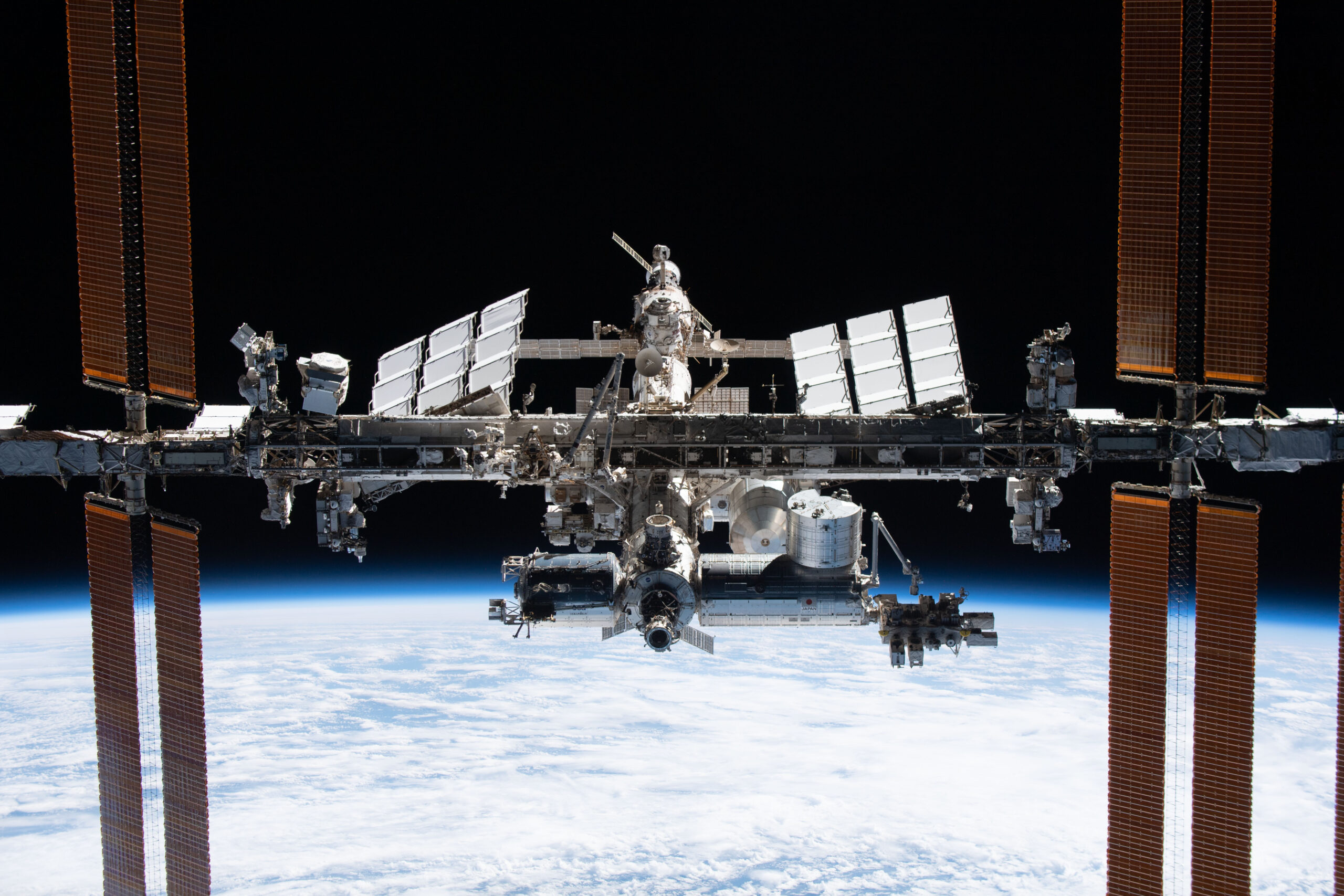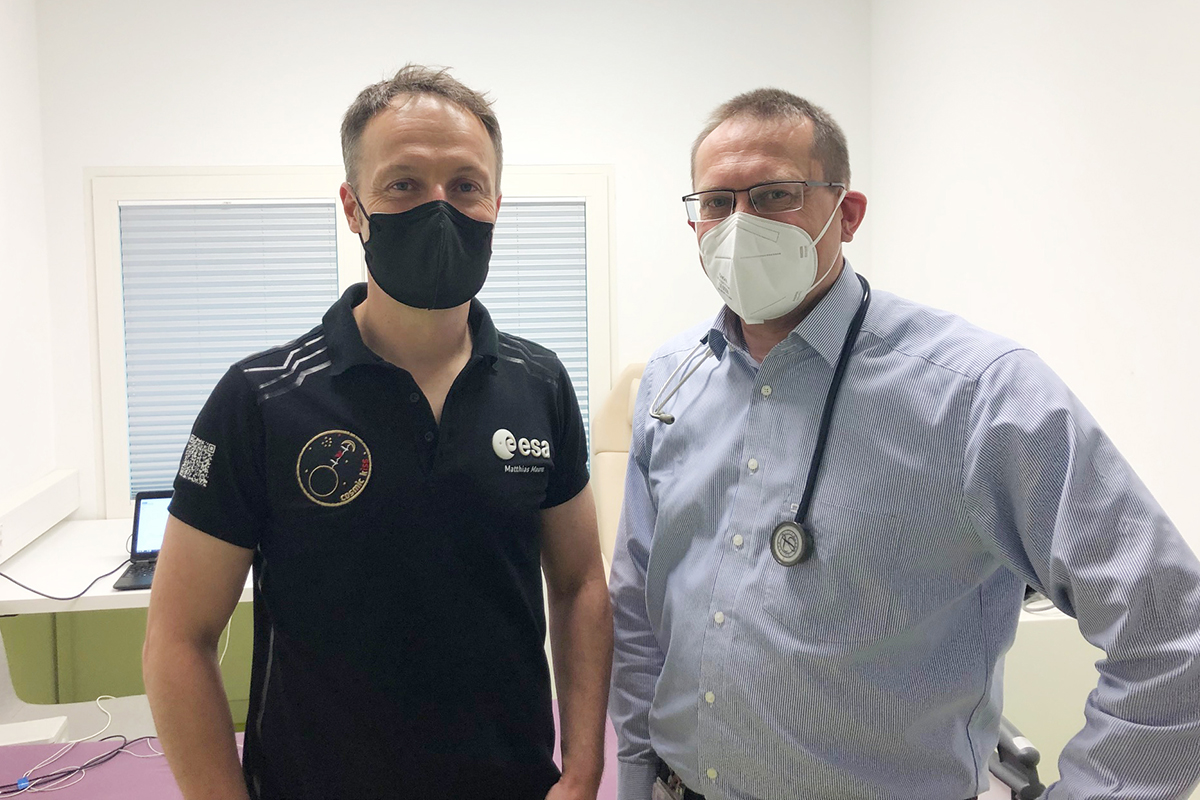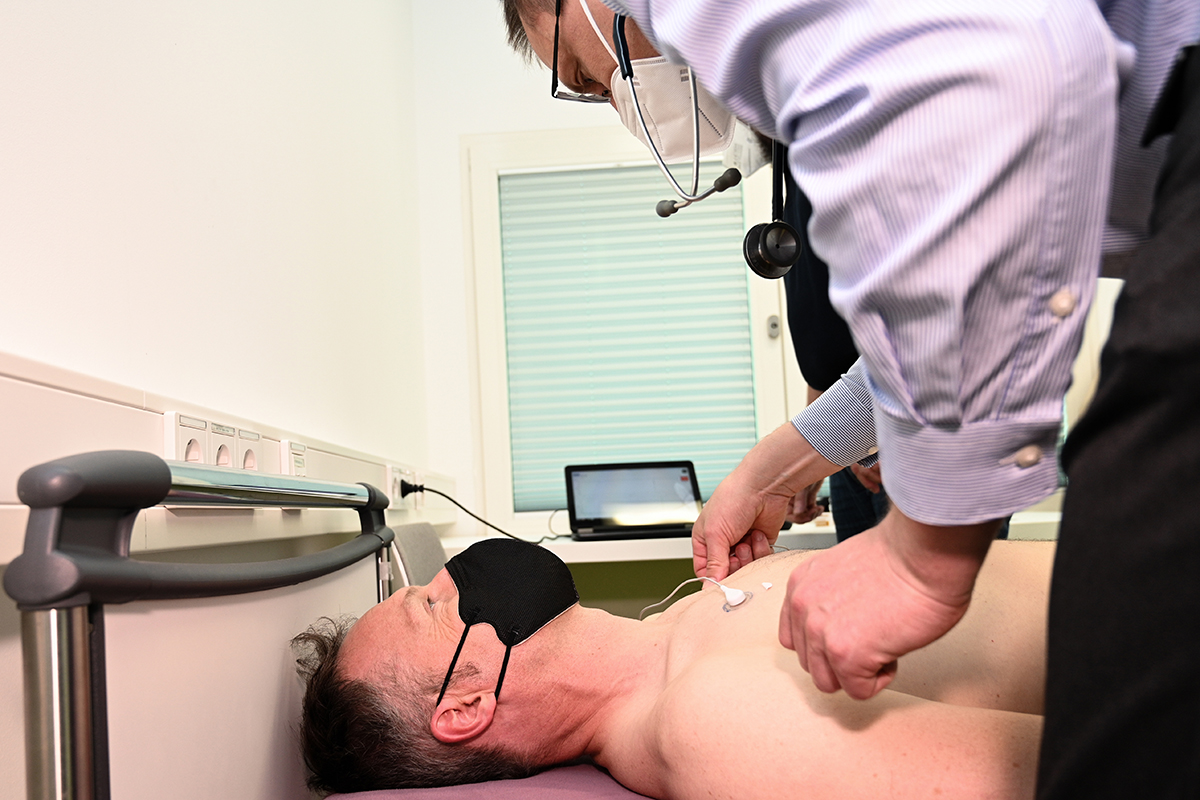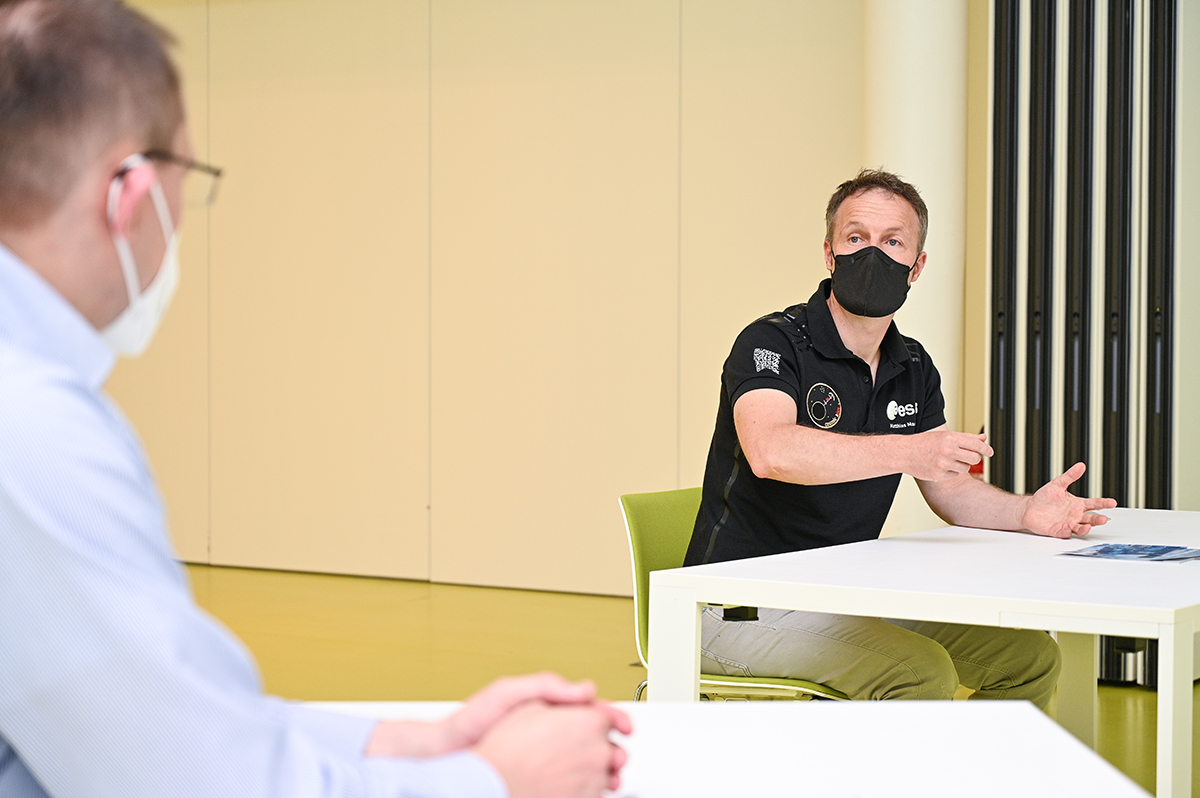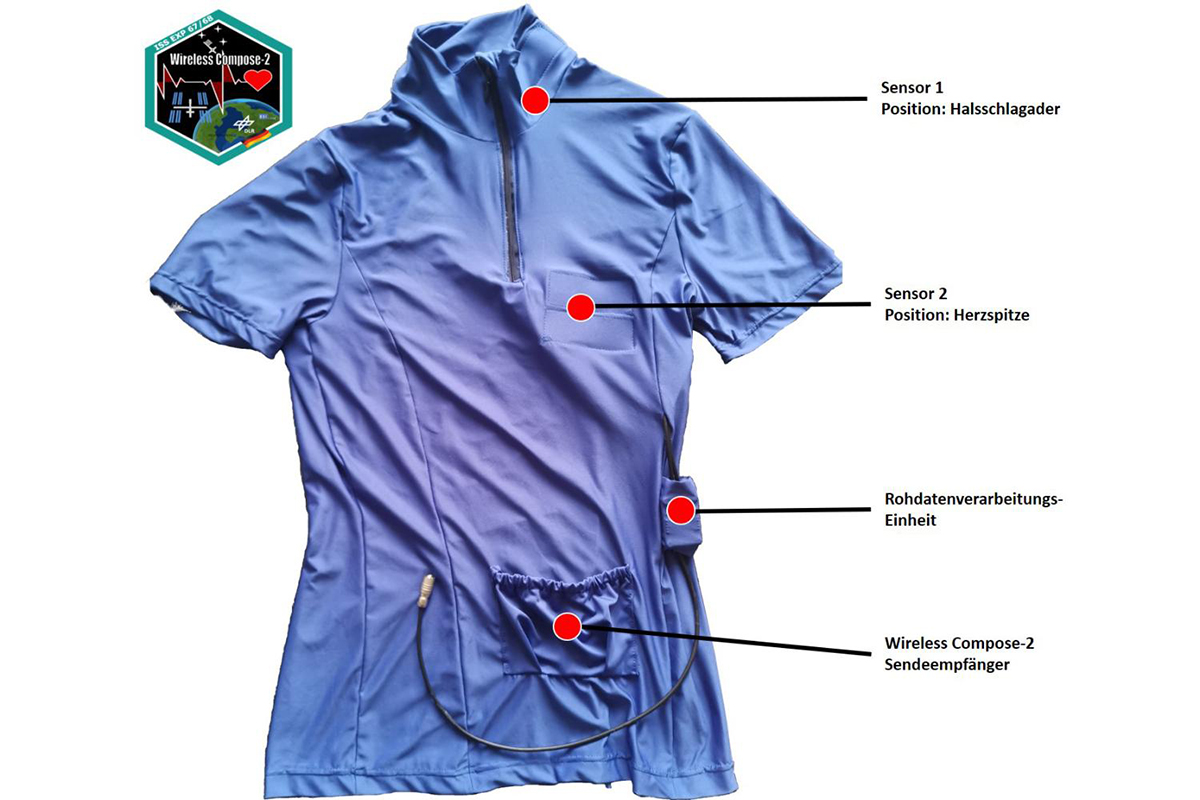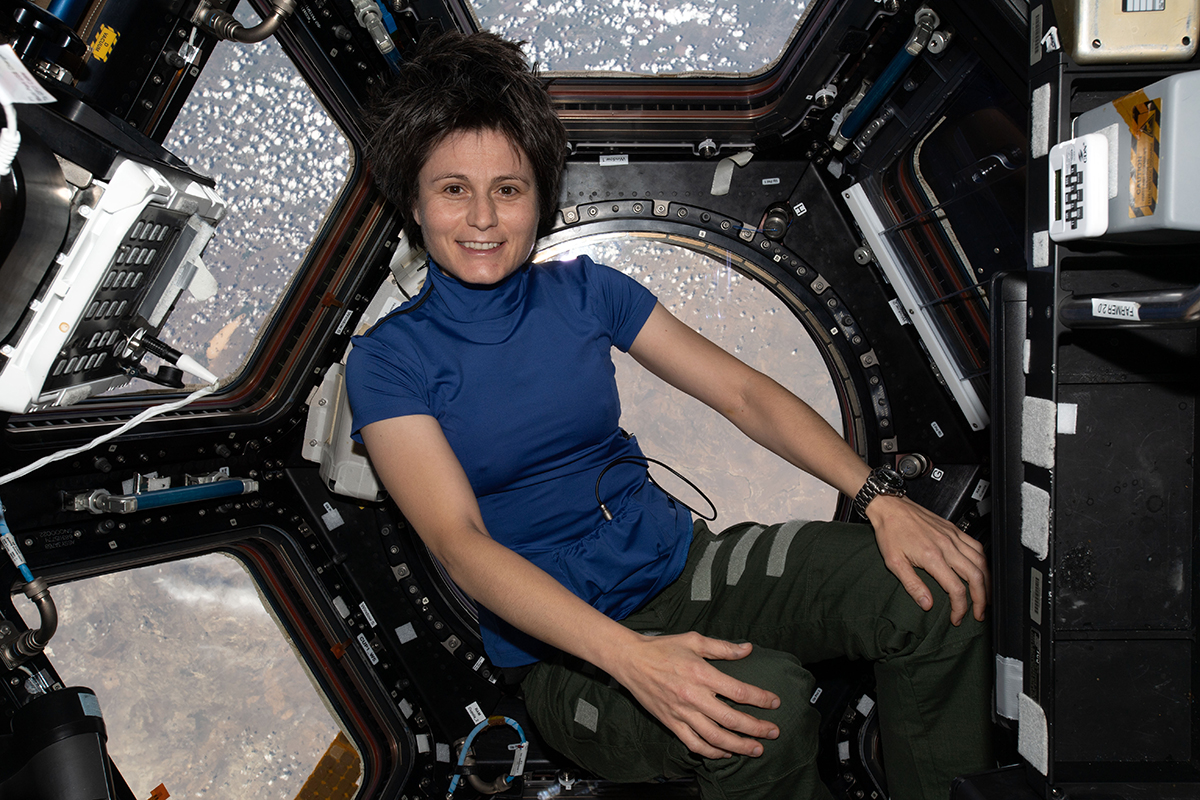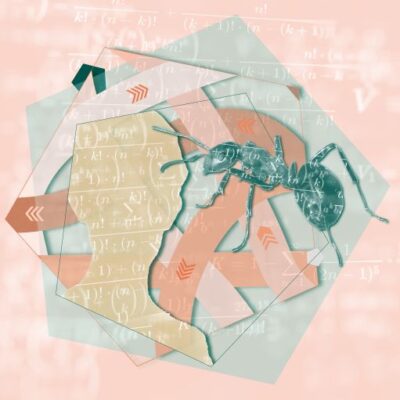The 20th of July is International Space Research Day. Researchers at Bielefeld University are currently studying whether the blood circulation of astronauts can be monitored unobtrusively. In an experiment on the International Space Station (ISS), they are evaluating a method for measuring cardiovascular function. Smart sensors sewn into a T-shirt measure the minimal chest movements caused by the heartbeat and send this information back to Earth via a wireless network. ‘Our experiment is going very well,’ says Professor Urs-Vito Albrecht, MD, from Bielefeld University’s Medical School OWL. ‘The data are promising and we are very pleased.’ In this study, Bielefeld University is cooperating with Hamburg University of Technology, the Bremen Institute of Space Systems of the German Aerospace Centre, the company Hohenstein Laboratories, and the aerospace company DSI Aerospace Technologie.
Spacewalks are incredibly dangerous and very strenuous. Only a space suit separates the astronaut from life-threatening outer space. Working for hours in their bulky suits is exhausting and puts enormous strain on the cardiovascular system. ‘A collapse during an extra-vehicular activity would be fateful. It is therefore very helpful to monitor heart rate and blood circulation continuously,’ says Professor Urs-Vito Albrecht, MD, from the Digital Medicine Research Group at the Medical School OWL. ‘We can detect excessive strain at an early stage and take appropriate countermeasures.’
Albrecht is involved in the BEAT experiment that is being carried out with two space travellers, Dr Matthias Maurer and Samantha Cristoforetti. Together with his colleagues, he is studying whether ballistocardiography is an appropriate method for performing unobtrusive long-term measurement of cardiovascular function with a low resource input. Professor Sebastian Kuhn, MD, head of the Digital Medicine Research Group, says: ‘The findings are also significant for future healthcare on Earth.’
Measured in space, evaluated on earth
BEAT stands for ‘Ballistocardiography for Extraterrestrial Applications and Long-Term missions’. At the core of the experiment, a smart T-shirt is being used to measure the smallest cardiovascular accelerations of the astronauts’ bodies. This should deliver information on the heart’s functioning. The ballistocardiography method had almost fallen into oblivion before experiencing a renaissance thanks to sensor processor technology.
‘On the ISS, gravity is so low that it has hardly any influence on acceleration measurements,’ explains Urs-Vito Albrecht, who heads the experiment in the Digital Medicine Research Group. ‘This makes it easier to investigate whether ballistocardiography is a suitable method for more long-term assessments that are spatially more distant from Earth.’
The BEAT experiment is part of the ‘Wireless Compose 2’ project led by the German Aerospace Center (DLR) Bremen. The smart T-shirt along with the sensors and the technology used in it to transfer signals to earth in the project were developed by a consortium of Bielefeld University, Hamburg University of Technology, the German Aerospace Center Bremen, and the companies Hohenstein Laboratories and DSI Aerospace Technologie.
Body vibrations deliver information on heart functioning
Ballistocardiography takes advantage of the fact that the force of the beating heart and the resulting flow of blood into the vessels produce characteristic vibrations that can be measured on the surface of the body. These vibration patterns correlate with cardiovascular functions. The method was already described as early as 1877, but its widespread use has only become possible thanks to today’s smart technology. Currently, ballistocardiography can be used particularly to determine heart rate, heart rhythm, and relative blood pressure. ‘With a judicious use of the technology and the right methodology, we shall have a further instrument for continuous cardiovascular monitoring at our disposal in the future,’ says Albrecht.
Ballistocardiography as an additional diagnostic method
One method in common use today is echocardiography (ultrasound examination of the heart). It is used to assess the functioning of the heart: doctors hold an ultrasound probe to the chest or move an ultrasound probe to the level of the heart in the oesophagus. Sound waves are reflected back from the heart tissue and the heart chambers. Software evaluates the data and displays them on the echo machine’s screen. ‘This gives us valuable information about the heart,’ explains Albrecht. ‘However, echocardiography is not designed for continuous measurement. It is also rather unsuitable for space missions, because no activities can be carried out in parallel, and certainly no outboard missions.’ Theoretically, ballistocardiography can provide similar information to echocardiography. Albrecht and his colleagues are studying whether the method will support continuous cardiovascular diagnostics in the future and what added value it has to offer.
Determining heart valve activity through chest movement
‘Our experiment is also investigating how well we can use ballistocardiography to measure the opening and closing times of the heart valves.’ To register the heart’s movement, assistant professor Dr.-Ing. Ulf Kulau from Hamburg University of Technology has developed sensors for a smart T-shirt that measures the chest movement caused by the heartbeat. The T-shirt, called SmartTex, incorporates two of these sensors and was developed by the company Hohenstein Laboratories. When an astronaut puts it on, the sensors attach themselves to the skin above the carotid artery and above the cardiac apex.
Two astronauts, Matthias Maurer and Samantha Cristoforetti, participating in the study
It was possible to recruit German astronaut Dr Matthias Maurer and Italian astronaut Samantha Cristoforetti for the experiment. The BEAT research team wants to clarify whether the method can be used equally well for both women and men. The study plan is for Maurer and Cristoforetti to each wear their special T-shirts on the ISS up to six times at two-week intervals—Maurer during his stay between November and May; Cristoforetti during her current stay for which she left Earth in April.
The sensors in the T-shirts record the astronauts’ data that are then sent to Earth via a wireless network. They will be evaluated in detail when the last data reach Earth in autumn. ‘We can already see that heartbeat and heart rate can be determined very well,’ reports Urs-Vito Albrecht. ‘We can already detect changes over time.’ It will have to be clarified whether and how these data relate to long-term periods of weightlessness and the associated physical changes.
Health assistance systems for astronauts
Urs-Vito Albrecht sees smart sensor technology as a potential basis for monitoring the health of astronauts in the future. Like his Hamburg colleague Ulf Kulau, he believes that it makes sense to equip all astronauts with sensors, especially in view of the upcoming Artemis mission to the moon that envisages setting up a lunar station before the end of this decade. Both agree that it will become necessary to combine smart sensors with artificial intelligence as the distance between space travellers and their ground crew increases. ‘Such assistance systems could then support the astronauts with diagnoses and health recommendations,’ says Albrecht. Kulau adds that ‘smart and energy-efficient sensor systems are key technologies—both in space and on Earth.’
